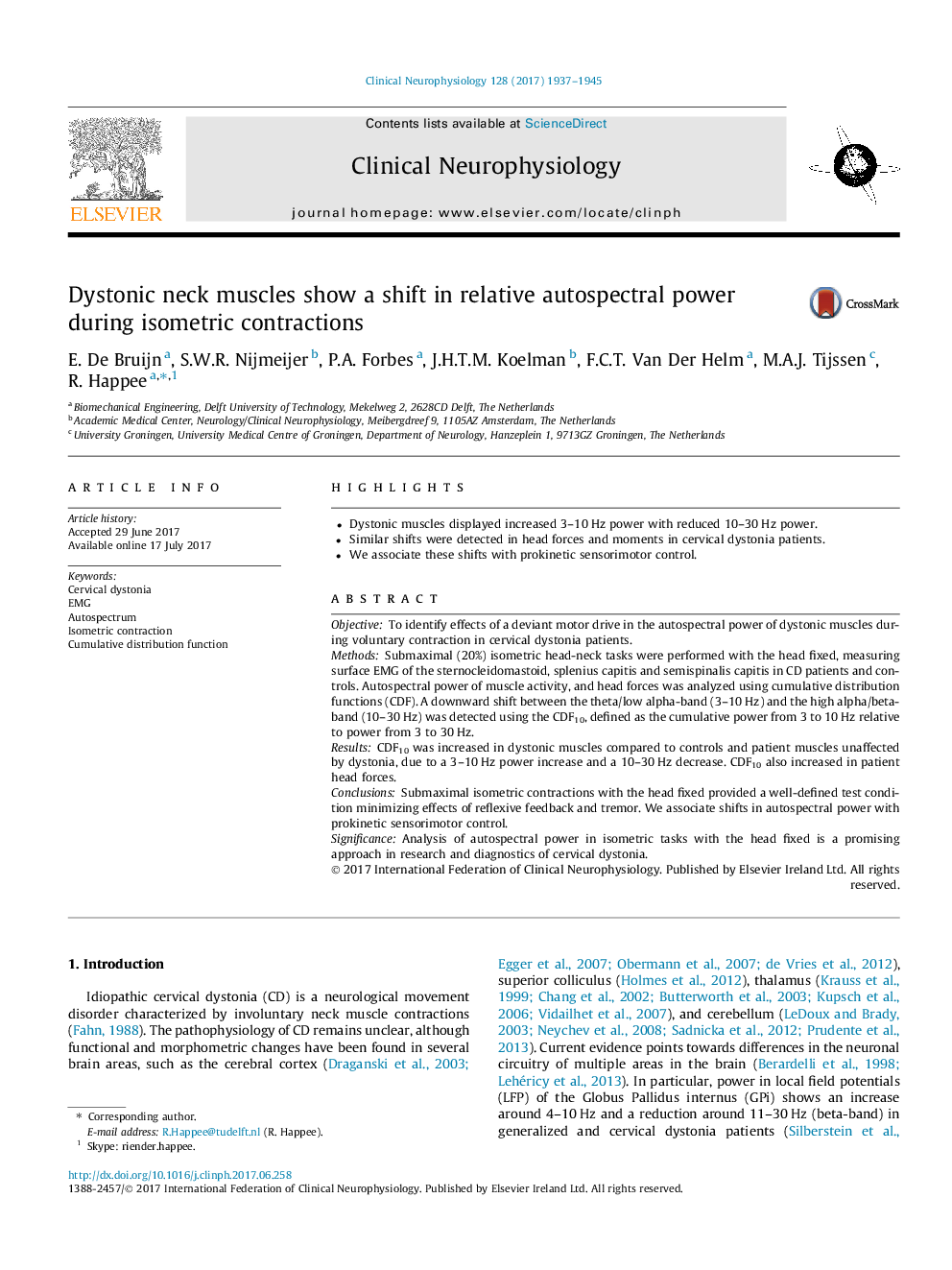| Article ID | Journal | Published Year | Pages | File Type |
|---|---|---|---|---|
| 5627705 | Clinical Neurophysiology | 2017 | 9 Pages |
â¢Dystonic muscles displayed increased 3-10 Hz power with reduced 10-30 Hz power.â¢Similar shifts were detected in head forces and moments in cervical dystonia patients.â¢We associate these shifts with prokinetic sensorimotor control.
ObjectiveTo identify effects of a deviant motor drive in the autospectral power of dystonic muscles during voluntary contraction in cervical dystonia patients.MethodsSubmaximal (20%) isometric head-neck tasks were performed with the head fixed, measuring surface EMG of the sternocleidomastoid, splenius capitis and semispinalis capitis in CD patients and controls. Autospectral power of muscle activity, and head forces was analyzed using cumulative distribution functions (CDF). A downward shift between the theta/low alpha-band (3-10Â Hz) and the high alpha/beta-band (10-30Â Hz) was detected using the CDF10, defined as the cumulative power from 3 to 10Â Hz relative to power from 3 to 30Â Hz.ResultsCDF10 was increased in dystonic muscles compared to controls and patient muscles unaffected by dystonia, due to a 3-10Â Hz power increase and a 10-30Â Hz decrease. CDF10 also increased in patient head forces.ConclusionsSubmaximal isometric contractions with the head fixed provided a well-defined test condition minimizing effects of reflexive feedback and tremor. We associate shifts in autospectral power with prokinetic sensorimotor control.SignificanceAnalysis of autospectral power in isometric tasks with the head fixed is a promising approach in research and diagnostics of cervical dystonia.
